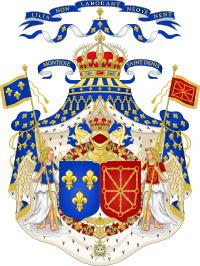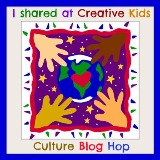Cet article fait référence au thème du mois de juin choisi par les blogueurs
de la communauté Multicultural Kid Blogs.
Vous pouvez retrouver tous les articles sur le thème "Drapeau"
sur le site http://kidworldcitizen.org/ à partir du 11 juin.
This post was written for the MKB Blog Carnival of June,
the topic being "Flags". You can find the list of the other posts
on the website: http://kidworldcitizen.org/ after the 11th of June.
Un peu d'histoire...
A bit of History
Le drapeau français est bleu / blanc / rouge depuis la Révolution française. Pourquoi ces trois couleurs? La réponse n'est pas si simple. Mais pour ne pas trop rentrer dans les détails, je vous donne ces éléments essentiels:
The French flag is blue / white / red since the French Revolution. Why these three colors? The answer is not so simple. But I will try to not give too many details, and just the essentials:
* Ces trois couleurs étaient déjà utilisées par l'armée française ainsi que par plusieurs Rois, mais pas forcement toutes ensembles, avant la Révolution française.
These three colors were already used by the french army and several kings before the French Revolution (but not always together).
 |
| Drapeau du Régiment des Gardes Françaises, créé en 1563. Flag for the Gardes Françaises regiment, born in 1563. |
 |
| Drapeau d'ordonnance du régiment de Poitou créé en 1616 et affecté de 1665 à 1682 aux Indes. Flag for the Poitou regiment, created in 1616 and based in India between 1665 and 1682. |
 |
| Les armoiries du Royaume de France utilisées jusqu'à la Révolution. Le blason de Navarre y figure depuis qu'Henri, roi de Navarre, était devenu roi de France sous le nom d'Henri IV. Armorial bearings of the French Kingdom used until the Revolution. The blazon of Navarre is figured on it since Henri, king of Navarre, became the French king. |
* Le bleu et le rouge était des couleurs très souvent utilisées par la ville de Paris
The blue and the red are colors often used for the city of Paris.
 |
| Enluminure du XVIe siècle: blason de Paris |
* Le blanc était une couleur représentant le royaume de France, ainsi que la pureté. On doit cette prééminence du blanc sur les autres couleurs royales à Henri IV. Ses successeurs mirent avant le côté catholique du blanc virginal (La Vierge Marie est protectrice du royaume dès Louis XIII), pour faire oublier que c'était un emblème protestant à la base...
The white was one of the color for the kingdom of France, and also purity. The preeminance of the white for royal color comes from Henri IV. His successors told about the catholic side of the color (the Virgin Mary is protector of the Kingdom since Louis XIII) to make people forget it was a protestant emblem at first...
 |
| Étendard: utilisé en présence d'un membre de la famille royale. Si le Roi est là, le drapeau est alors complètement blanc. Banner: used when a royal family member was there. If it was the King, the banner was pure white. |
* Les Français ont aidé les Révolutionnaires Américains quelques années plus tôt. Le nouveau drapeau américain reprenait les couleurs de celui de la couronne d'Angleterre. La Fayette y a certainement pensé lorsqu'il a créé la cocarde tricolore comme emblème de la Révolution française.
The French helped during the American Revolutionnary War, a few years earlier. The new american flag hold the colors who were first from the English Crown. La Fayette certainly thought about it when he created the tricolor rosette as a french revolutionnary emblem.
 |
Cocarde tricolore française French tricolor rosette |
Lors de la Révolution française, les trois couleurs Bleu, Blanc et Rouge furent adoptées comme étant celle de l'Etat français. De la cocarde tricolore, on fit des drapeaux. Mais ils n'étaient pas tous présentés de la même façon.
During the French Revolution, the three colors blue, white, red were adopted as being the ones for the French State. From the rosette, flags were made. They were not all presented the same.
 |
| Drapeau révolutionnaire pour la Fête de la Fédération. Revolutionnary flag for the Federation Day. |
C'est l'Assemblée constituante de 1790 qui en détermina le sens (bandes verticales) et l'ordre des couleurs (le blanc est encadré du bleu et du rouge) sur les pavillons maritimes. De là, le pavillon français connut encore un changement sous la Convention (le bleu serait à la hampe), et c'est sous Napoléon que le premier drapeau national, reprenant le pavillon maritime, fut adopté. Depuis, il n'a que peu changé.
It's the Assemblée constituante in 1790 who determined the direction (vertical strips) and the order of the colors (white between red and blue) on the maritime flags. From there, the flag had one change during the Convention era (blue would be on the pole side) and it was Napoleon who declared the maritime flag would also be the national flag. Since then, it has not changed much.
(source des photos: wikipedia)
*****§§§*****
Mes enfants et le drapeau
My kids and the flag
La coupe du monde de football approche et mes enfants n'ont pas échappé à une petite poussée de "patriotisme" footballistique. Gabriel veut taper dans le ballon dès qu'on va au parc, et Sophie adore agiter le drapeau - on a frôlé un oeil crevé encore hier.Vivant en Allemagne, il est impossible de passer à côté de l’événement. Et puisque je vais participer avec d'autres blogueurs à un projet: "World Cup for Kids", je suis un peu responsable aussi...
The Soccer World Cup is starting very soon and my children didn't escape a little surge of french soccer patriotism. Gabriel wants to shoot in the ball each time we go to the park and Sophie loves to wave the flag - we nearly had a whacked eye yesterday. Living in Germany, it's impossible to avoid the event. And as I'm going to take part in a blogger project "World Cup for Kids", I'm a bit responsible too...
Je vous parlerai demain du projet qui va servir essentiellement à faire découvrir les pays en compétition (culture, histoire, économie, etc) à un jeune public.
(Bon, ce projet est surtout en anglais... Désolée pour ceux qui ne le comprennent pas.)
I will talk to you tomorrow about this project which will essentially promote the teams' countries (culture, history, economic, etc) to a young public.



It's true your post complements mine very well as you talk more about the history of the French flag. I enjoyed reading it.
RépondreSupprimerhttp://www.loumessugo.com/en/blog/entry/the-french-flag-le-tricolore
Little one and I will be exploring France, and this post is a wonderful resource, plus your kids are adorable!!! Thank you for sharing at the Creative Kids Culture Blog Hop! Pinnig!
RépondreSupprimer